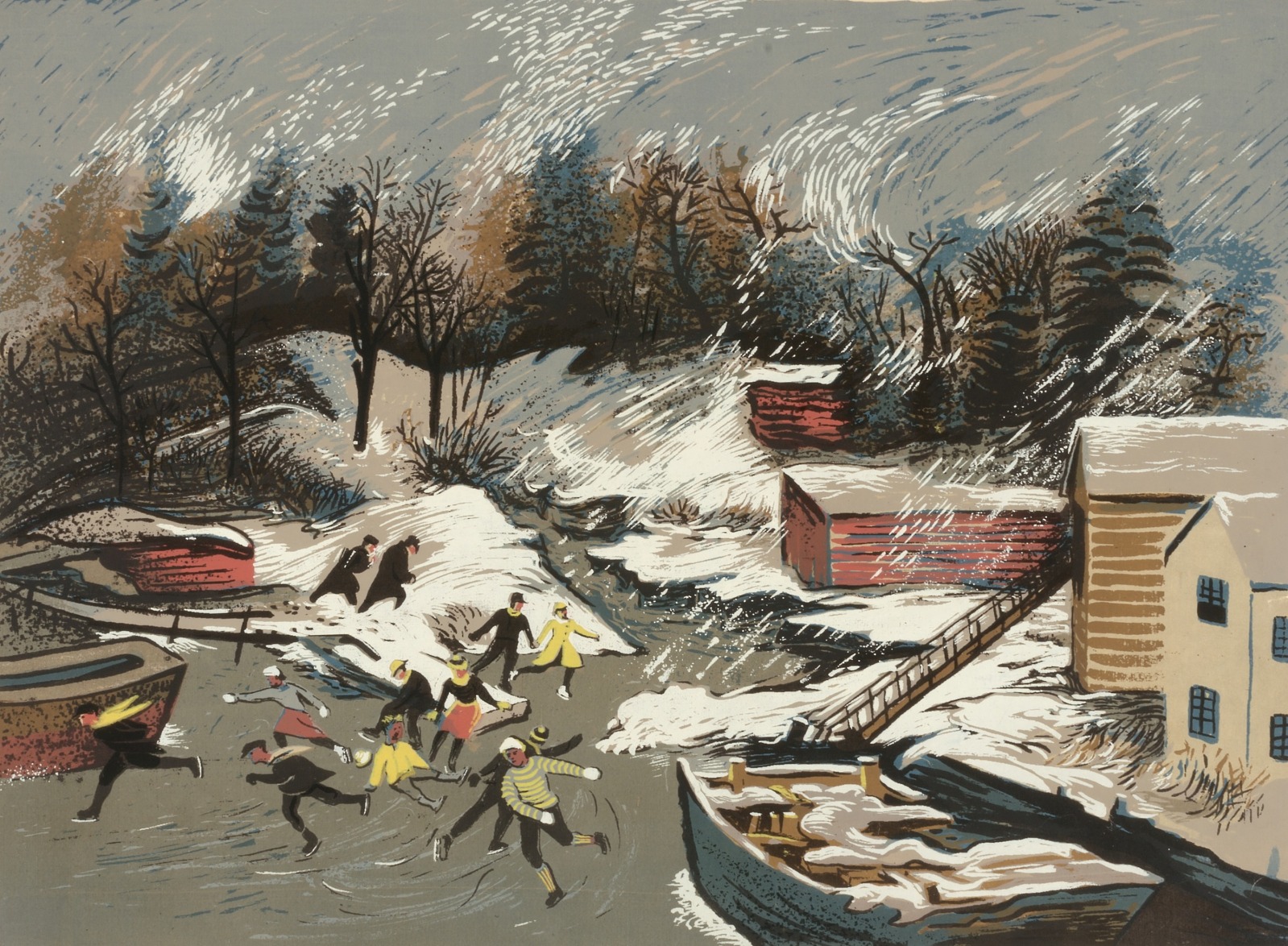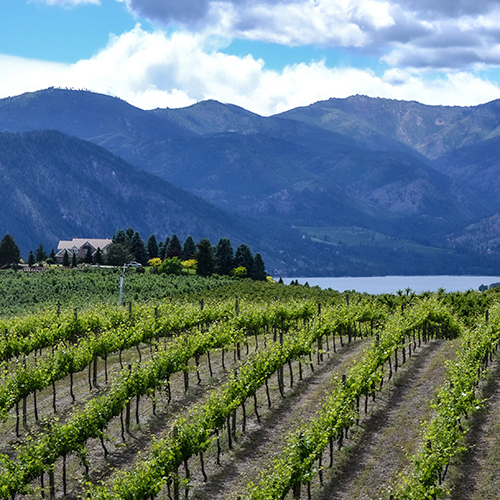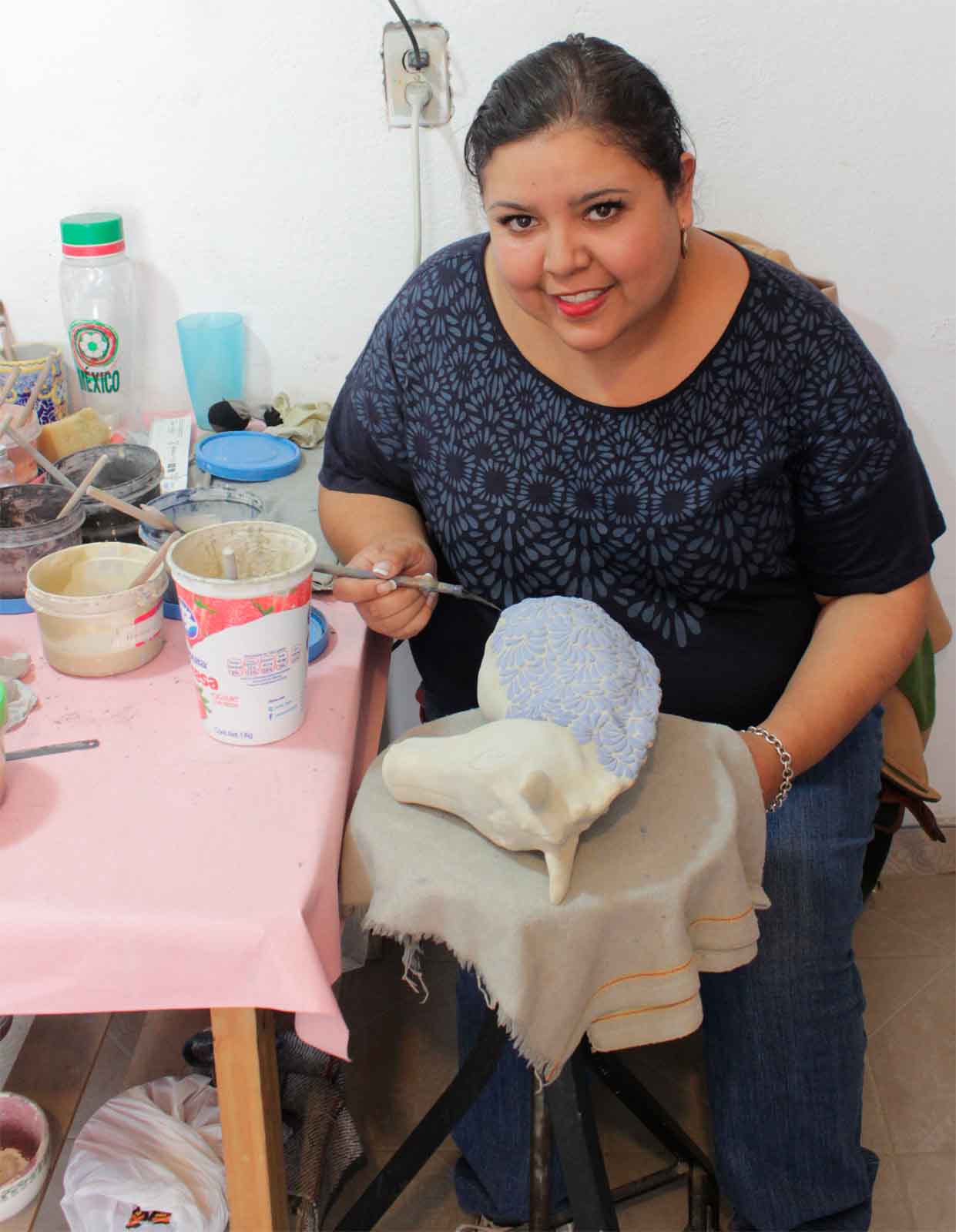No matter what that groundhog told us yesterday, wouldn't it be nice if winter were over right now? Barring that, how about some ways to make the most of the season we're stuck with for a while? This week's edition provides just that, including a trio of sommelier-led wine programs, a voyage down the enchanting Seine, a new global artisans' marketplace, and opportunities to widen the world of the cooped-up kids in your life.
They're among the offerings designed to make sure you continue to enjoy what you,ve come to value from Smithsonian Associates: programs and experiences that are entertaining, informative, eclectic, and insightful.
Cool Kids...Smithsonian Style
 Harry Gottlieb, Winter on the Creek. Smithsonian American Art Museum, Gift of Elizabeth Olds
Harry Gottlieb, Winter on the Creek. Smithsonian American Art Museum, Gift of Elizabeth Olds
The Smithsonian's most recent educational collaboration with USA Today is designed to fire up young imaginations during chilly weather. "Winter at Home" is a 40-page learning guide that encourages elementary and middle-school students to see their homes and neighborhoods in new ways during the winter months. Drawing on the collections and expertise of the Smithsonian, the guide's activities and stories engage young learners in STEM, history, and the arts. "Winter at Home," which is available as a downloadable PDF, also features bilingual Spanish and English content. The cold-weather fun includes making classic Mexican hot chocolate from the National Museum of the American Indian's Mitsitam café, creating bedtime stories inspired by winter-themed artwork in Smithsonian museums, and animal-focused activities from the National Zoo, as well as tips on maintaining strong ties with friends during difficult times guided by the Kindness Heals initiative of the Smithsonian Asian Pacific American Center.
For at-home youngsters who want to take a deeper dive into the collections, don't forget the array of Smithsonian Virtual Winter Adventures that engage them with unique content about natural sciences, history, art, and much more. Weekday and weekend sessions during February and March explore a variety of Smithsonian topics and include virtual visits to museums, hands-on projects, games, collaborative challenges, and conversations with experts during live online interactions with a team of experienced instructors.
View the Learning Guide
Winter Virtual Adventures
Out-of-This-World Wines

"This is a lovely deep red with undertones of meteor showers and a hint of celestial sparkle." That's how a sommelier might describe the contents of a dozen bottles of wine from France's Bordeaux region that recently splashed into the Gulf of Mexico inside SpaceX's Dragon capsule after a year aboard the International Space Station. The wine, along with 320 sections of grapevine called vine canes, was part of an experiment to determine how space radiation and microgravity affect wine components during the aging process. Smithsonian magazine reported on the project.
Someone who'd certainly find the perfect words to describe any high-flying wine is Erik Segelbaum, Smithsonian Associates Streaming's resident virtual sommelier. He uncorks a trio of programs (including wine-tasting kits for D.C.-area participants) in the coming weeks. They focus on wines of Northern California (Friday, February 5); Washington-state wines from women makers (Friday, March 5); and wines from the very oldest world, Israel and the Levant (Friday, April 9). Perhaps bit of stargazing is in order after your sipping.
Wines of Northern California
Washington State Wines From Women Makers
Wines of the Oldest World
Handmade Traditions

You can't keep a beloved festival down. The Smithsonian Folklife Festival has expanded its work with artisans despite not being on the National Mall last summer. Inspired by the traditional creators who continue to practice and teach their crafts during these challenging times, the new digital Smithsonian Folklife Festival Marketplace honors their creativity, cultural heritage, and masterful skills. Launched in collaboration with Novica, the largest online retailer of works by artisans and craftspeople around the world, the Festival Marketplace spotlights handmade objects representing communities from recent festival programs including Armenia, Peru, Mexico, Brazil, and Kenya, along with other regions. Sales of the distinctive clothing, jewelry, accessories, and home décor support these global artisans in the absence of the in-person craft fairs and tourism they typically rely on, as well as sustain communities, generations, and cultural traditions.
Browse the Folklife Festival Marketplace
Along the Seine

The Seine flows through every aspect of daily life in Paris. From its legendary origins in the story of Sequana, the Gallo-Roman healing goddess who gave it its name, to its myriad reflections in art, literature, music, and film, this fabled river defines and shapes the essence of a great city-and our imagination's vision of it. Join longtime New York Times foreign correspondent Elaine Sciolino on a glorious visual trip down the Seine in a Smithsonian Associates Streaming program on Thursday, March 25. Drawing on her new book The Seine: The River That Made Paris, she explores the Seine through its rich history and follows it from the remote plateaus of Burgundy through Paris and to the sea. She also shares her experiences patrolling with river police, rowing with a restorer of antique boats, sipping Champagne at a vineyard along the river, and even daring to go for a swim.
A stroll along the quays of the Seine is part of the impromptu wanderings of any self-respecting flâneur in Paris. In a New York Times account of her meanderings through the city, Stephanie Rosenbloom writes, "the Seine is like a reverse mood ring. Whether it is placid and giving, or green-gray and angry, one synchronizes with its whims." Her charming narrative of a solo day in Paris will make you want to follow in her footsteps.
Read the New York Times Article
Register for the Program
If We Could Talk to the Animals

Do you think your dog talks to you? Are those noisy birds actually chattering about you behind your back? Is what we perceive language or something else?
All animals communicate, from tiny worms that broadcast their reproductive needs by releasing scents, to troops of chimpanzees who teach one another to make tools. The amount of information animals transmit varies tremendously-and so does the way they share that information. Arik Kershenbaum, a zoologist at the University of Cambridge, has studied the meaning in animal communication, from wolves, to dolphins, to birds. In a Thursday, March 18 Smithsonian Associates Streaming program, he explores animal communication, the differences between language and communication, and whether we will ever be able to understand what animals are saying-or if they're saying anything at all.
Since their voices surround us all the time, we sometimes forget birds aren't the only species that communicate in song-and what they tell us can be significant. In 2017, researchers off the coast of Madagascar accidentally picked up powerful vocalizations by blue whales of a type that had never been heard before, leading scientists to conclude that they had discovered an entirely new population of the endangered species. Smithsonian magazine examines why that eavesdropping proved important.
Read the Smithsonian Magazine Article
Register for the Program